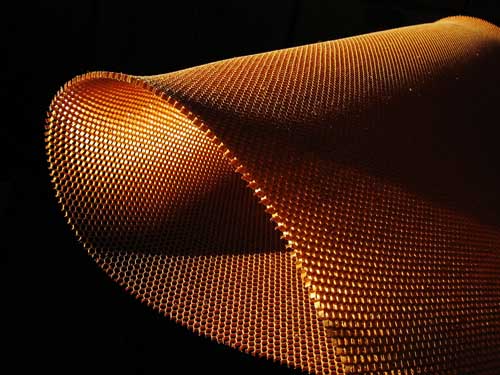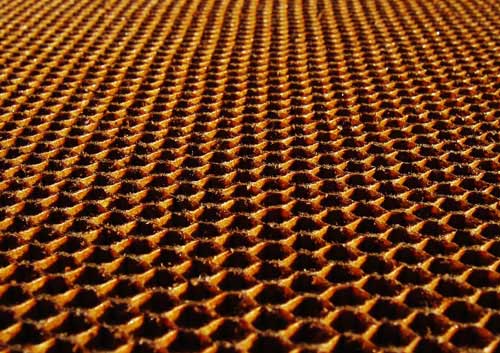|
|
|
Copyright copyright 2018 Fritz Mueller |
|
|
|
Copyright copyright 2018 Fritz Mueller |
DoubletopsNote: I wrote the following paragraphs in 2006. My, how things have changed! In 2006, doubletops were relatively new and untried; neither players nor builders were sure just what to think - a combination of suspicion and excitement, most likely. In 2018, twelve short years later, doubletops are everywhere; playing or building a doubletop is "no biggie", as my granddaughter says. I've left the text below as written in 2006, with one exception; I've updated the number of doubletops I've constructed to the 2018 total, nearly 150. When shown one of my double-top guitars, a friend commented, "The rules have changed!" Such excitement is very typical. For the first time in a player's experience, perhaps, he or she has a truly responsive instrument in their hands, one with all the notes and no dead or wolf notes, with a real dynamic range, and power to spare. One, also, that responds to the lightest touch, and that has an extremely broad spectrum of colors, tones, and textures to explore. Without doubt, double-top guitars are a thrill to play. Double-top, sandwich-top, composite-topThe terms double-top, sandwich-top, and composite-top all refer to a relatively new and very exciting way to construct the soundboard of a guitar. Many luthiers now use composite construction for the backs of their instruments, but composite tops are rarer, and until recently have been built solely by two German luthiers, Matthias Dammann and Gernot Wagner. Both Dammann and Wagner have been very successful, and their instruments have been very well-received. Dammann's instruments, for example, are played by David Russell, Manuel Barrueco, Scott Tennant, and Andrew York. |
|
|

|
|
|
|
In developing my own composite-top guitars, I examined and played several of Dammann's and Wagner's instruments. Most of their "secrets" remain hidden within the soundboards of the instruments, however, and in order to advance, I undertook an extensive program of research. Unlike in traditional top construction, once a composite top is assembled, there is little that can be done to change its acoustic qualities, and it was often necessary to replace the top (sometimes several times on one guitar) to get the stiffness and resonance that I was seeking. Light and responsiveConstruction of a double-top involves two thin "skins" of wood separated by a core of an aerospace material called "honeycomb". Honeycomb is well-named, with a hexagonal cell structure that in thicker cross sections looks very like the honeycomb in a beehive. Density is very low, since there is considerably more open space than cell wall, and just like in a beehive, the hexagonal structure is very strong. |
|
|

|
|
|
|
As for the skins, to date I have used spruce, cedar, and redwood. All work extremely well, as do combinations of two species, one for the inner skin and another for the outer. Typically I use cedar for the inner skin because of its light weight, and I've achieved particularly fine results with either spruce or redwood as the outer surface of the guitar. Interestingly, in these combination double-tops, it is the species of wood of the outer skin that appears to determine much of the character of the sound we hear. Spruce outer skins give the separation, clarity, and bell-like quality we usually associate with spruce guitars, while cedar outer skins give the warmer, darker, more romantic sound traditionally associated with cedar tops. Apart from the composite top, there is nothing particularly unusual about the construction of my double-top instruments. I use a five-bar fan to brace the top, and I use the same back, side, and neck structure on my double-top guitars as I do on those made with traditional solid tops. To date (March 2018) I have completed nearly 150 very successful double-top instruments. Breaking the rulesSo how does a double-top guitar work? Lightness, of course, is a very important aspect of composite construction. For a given stiffness, a composite top may be 25% lighter than the equivalent solid top, which translates into a significantly greater ability to respond to the motion of the strings. But one of the surprises that came from my research is the realisation that - in thin cross sections, at least - composite tops flex very differently than solid tops, almost as if the grain of the wood has disappeared. The result is a structure that can respond much more easily to a wide range of resonances. One of the exciting aspects of composite construction for guitar tops is that the resulting instruments are well within the traditional tonality of the classical guitar. They sound "like a guitar", and players need not learn to appreciate a new tonality, as is often the case, for example, with super-loud instruments constructed with lattice bracing and ultra-thin tops. Undoubtedly this familiar guitar sound (or, more accurately, familiar guitar sound plus) is achieved because double-tops maintain the stiffness, thickness, and tap-tones of traditional soundboards, and therefore are able to repeat the resonances that define the traditional tonality. In my own double-top instruments, I set the air resonances and tap-tones exactly as I would on a solid-top guitar, a system I've derived from years of study and work within the Hauser guitar-building tradition. The result is an instrument that breaks the rules, yet simultaneously stays within them, and is very, very exciting to play. Doubletops are the new standardSo, in terms of sound and playability, what can you expect from a double-top guitar? |
|
|
|
|

|
|
|
|
Double-tops are the new standard. Players don't want to go back. Nor do I as a builder. See the instruments and orders pages for further details. |
|
"...A LOT OF SUSTAIN...PLENTY OF POWER, TOO...CAN COMPETE WITHOUT ANY PROBLEM WITH SOME SERIOUS LATTICE GUITARS WE HAVE. I'M REALLY IMPRESSED BY YOUR WORK HERE.... SOME LATTICE GUITARS HAVE A LOT OF VOLUME BUT SOMETIMES SEEM A LITTLE FLAT IN DYNAMICS, BUT YOURS HAS A WIDE RANGE IN DYNAMICS AND A LOT OF RELIEF."
#289 Philippe Mariotti France
|
|
|
![]()
Classical Guitars by Fritz Mueller
Email: Fritz Mueller
www.classicalguitars.ca
Tel: 250-476-1172
Snailmail:
Fritz Mueller, luthier
7210 Tatlayoko Road
Tatlayoko Lake, British Columbia
Canada V0L 1W0
"Doubletops" copyright 2018 Fritz Mueller
Website copyright 1998-2018